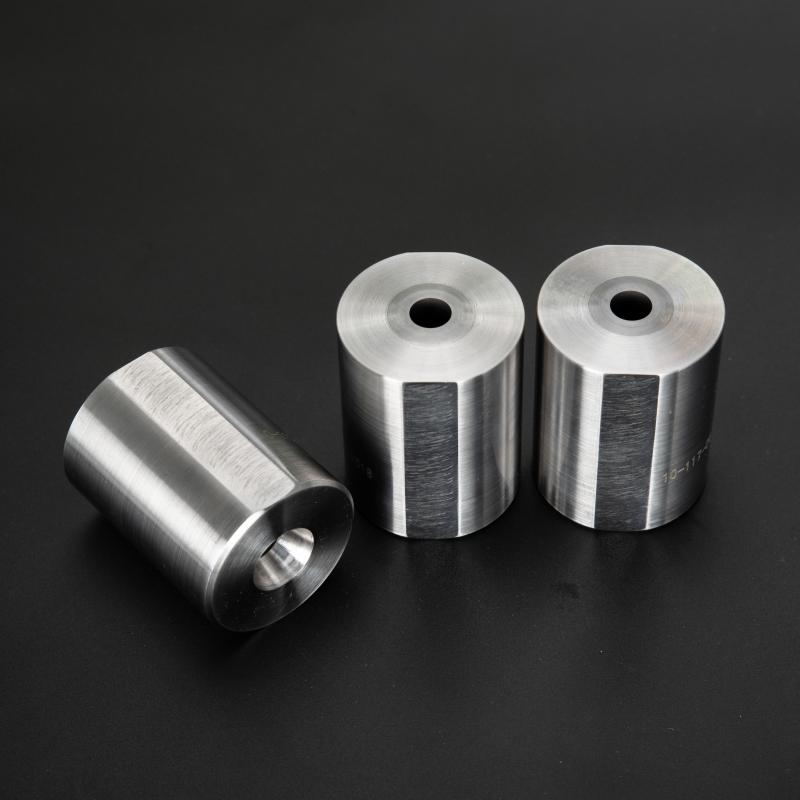Inner Cutting Dies are essential tools used in many manufacturing processes to produce precision-cut components. These dies specialize in creating internal features and intricate cuts that are crucial in various industries, including automotive, electronics, packaging, and medical equipment manufacturing. Due to their high precision, durability, and efficiency, Inner Cutting Dies play a vital role in meeting the increasing demand for complex, high-quality parts. Let’s explore how these tools are applied in different sectors and why they are so important for precision component manufacturing.

1. Automotive Industry
In the automotive industry, precision is paramount when it comes to manufacturing parts such as engine components, gear parts, and safety features. Inner Cutting Dies are commonly used for the production of intricate parts that require internal cuts or holes, such as:
Brake Components: The manufacture of brake pads and discs requires precise inner cuts to fit the mechanical design and function effectively.
Engine Parts: Inner Cutting Dies are used to create precision holes and slots in engine components like pistons, crankshafts, and cylinder heads. These parts need to be durable, lightweight, and able to withstand extreme pressure, making inner cutting dies an essential tool in their production.
Safety Features: Parts like airbags and seat belt mechanisms, which require internal components to function safely, also rely on inner cutting dies for accurate and reliable cuts.
The ability of inner cutting dies to create precise, clean cuts without compromising the integrity of the material makes them indispensable in the automotive sector.
2. Electronics Industry
The electronics industry is characterized by the production of highly detailed and small-scale components, where precision and efficiency are critical. Inner cutting dies are used extensively in manufacturing:
Connectors: The production of connectors, such as USB ports or HDMI slots, requires intricate internal cuts for pin placement and fitment. Inner cutting dies enable the high precision needed for these tiny, complex parts.
Circuit Boards: Inner cutting dies are utilized to make precise cuts in printed circuit boards (PCBs) to create holes for components like resistors, capacitors, and microchips. Accurate cutting ensures proper functionality and alignment in electronic devices.
Battery Components: Components of batteries, such as battery casings and terminals, often require internal cutting for precise fitment and safe functionality.
The demand for smaller, more intricate components in the electronics sector has driven the need for specialized inner cutting dies to meet these high-precision standards.
3. Packaging Industry
The packaging industry involves a wide range of materials, from plastic to metal, and requires reliable processes to create custom packaging for various products. Inner cutting dies are commonly used in the production of:
Packaging Boxes: Inner cuts are needed to create fold lines, slots, and window features for packaging boxes and containers. Inner cutting dies help ensure clean, precise cuts that maintain the integrity of the packaging material.
Plastic Containers: In packaging for food, pharmaceuticals, and cosmetics, plastic containers often require internal cuts for lids, openings, or internal compartments. Inner cutting dies allow for the creation of these features with high accuracy, ensuring that the packaging is both functional and secure.
Flexible Packaging: Flexible packaging for snacks, pharmaceuticals, or consumer goods often uses inner cutting dies to produce accurate perforations and seals. This enhances the ease of use and preserves the quality of the contents.
In packaging, inner cutting dies help manufacturers meet consumer demand for convenient, functional, and attractive packaging solutions.
4. Medical Device Manufacturing
The medical device industry requires high levels of precision and reliability to ensure safety and functionality. Inner cutting dies are used in the production of medical components, such as:
Surgical Instruments: Inner cutting dies are crucial in making intricate cuts in surgical tools, ensuring they meet strict medical standards. For example, scalpel blades and forceps require precise inner cuts to function properly in surgical settings.
Implants and Prosthetics: Medical implants, such as knee or hip prosthetics, require complex internal cuts to match anatomical structures. Inner cutting dies ensure that these components fit accurately, allowing for proper functionality and comfort.
Medical Packaging: Inner cuts are used in packaging for medical devices and pharmaceuticals, where they create precise openings for easy access while ensuring sterility.
The precision and cleanliness required in medical device manufacturing make inner cutting dies an essential part of the production process in the healthcare sector.
5. Aerospace Industry
The aerospace industry is one of the most demanding sectors in terms of manufacturing precision. Components like turbine blades, structural parts, and avionics require exceptional attention to detail, and inner cutting dies play a critical role in the following:
Engine Components: Inner cutting dies are used in the manufacturing of turbine blades, engine nozzles, and other critical components. These parts require precision cutting to ensure they can withstand high pressures and temperatures.
Structural Parts: The production of lightweight, strong parts such as wing structures, fuselage components, and landing gears relies heavily on inner cutting dies for the creation of precise holes and internal features.
Aerospace Equipment: Interior parts like seat frames, overhead bins, and compartment doors require accurate inner cuts to fit together correctly while maintaining safety and durability.
The complexity of aerospace components demands the use of advanced tools like inner cutting dies to meet stringent quality and safety standards.
Inner cutting dies are crucial tools that help various industries achieve high precision and efficiency in their manufacturing processes. From the automotive and electronics industries to medical devices, packaging, and aerospace, inner cutting dies are used to create complex, precise internal features that are vital to the functionality of the final product. As industries continue to demand smaller, more intricate components, the role of inner cutting dies in modern manufacturing will only grow in importance, providing the high level of accuracy needed for the continued innovation and production of high-quality goods.











